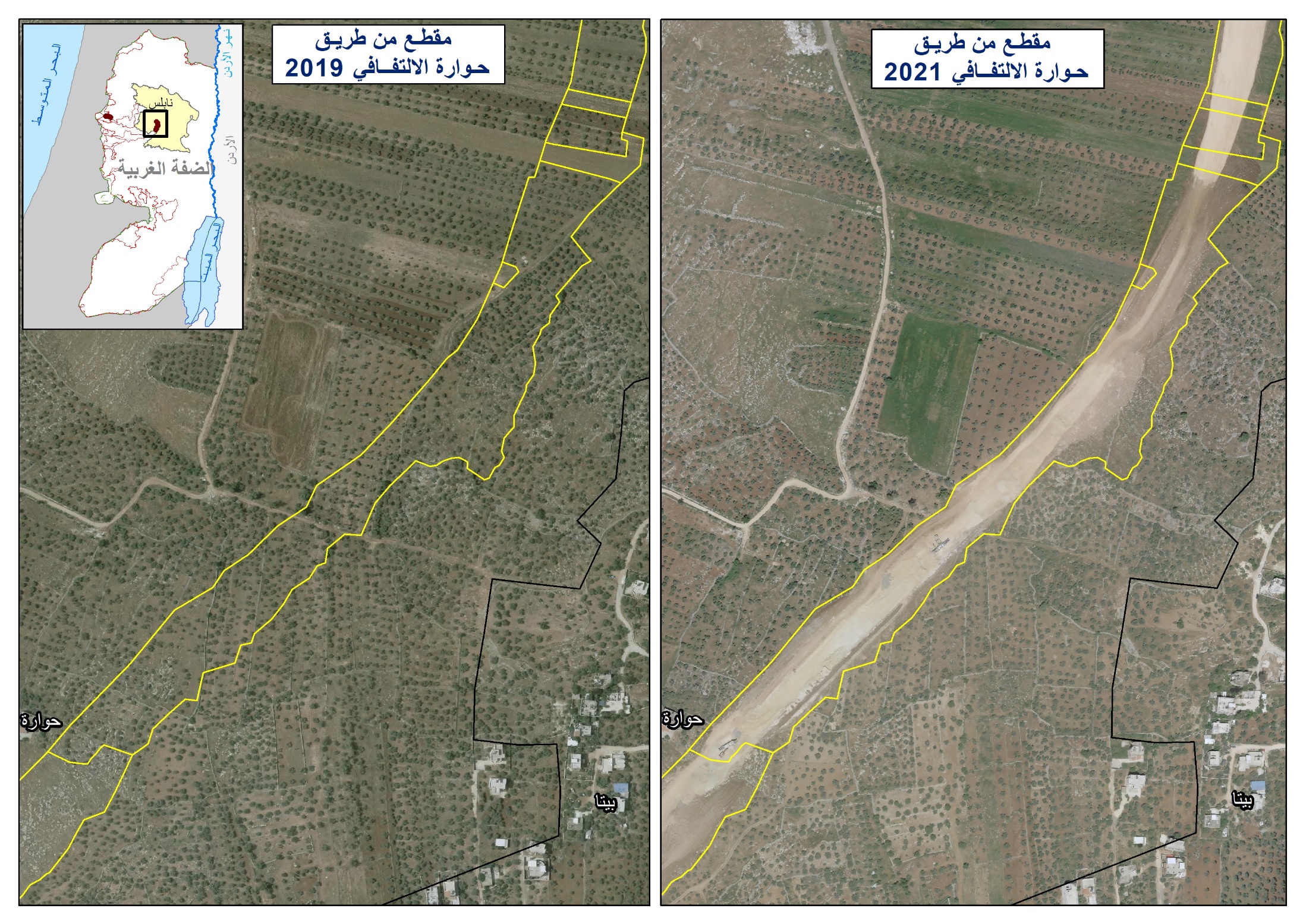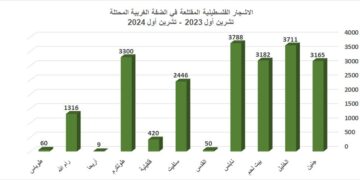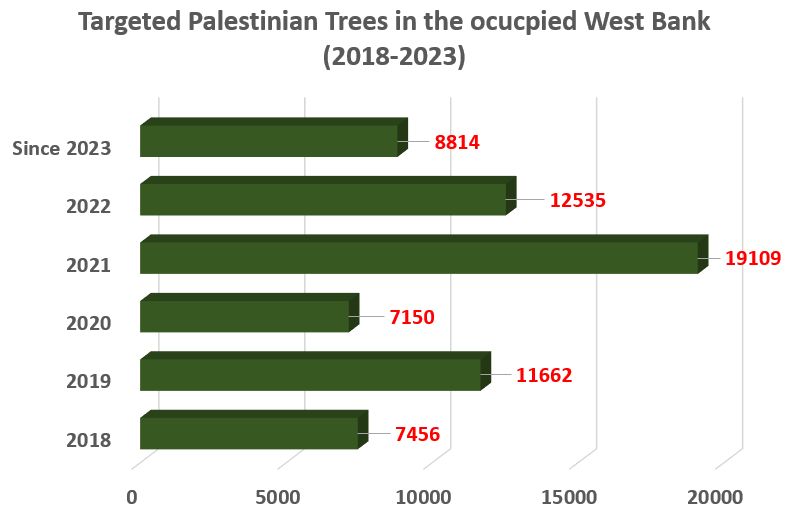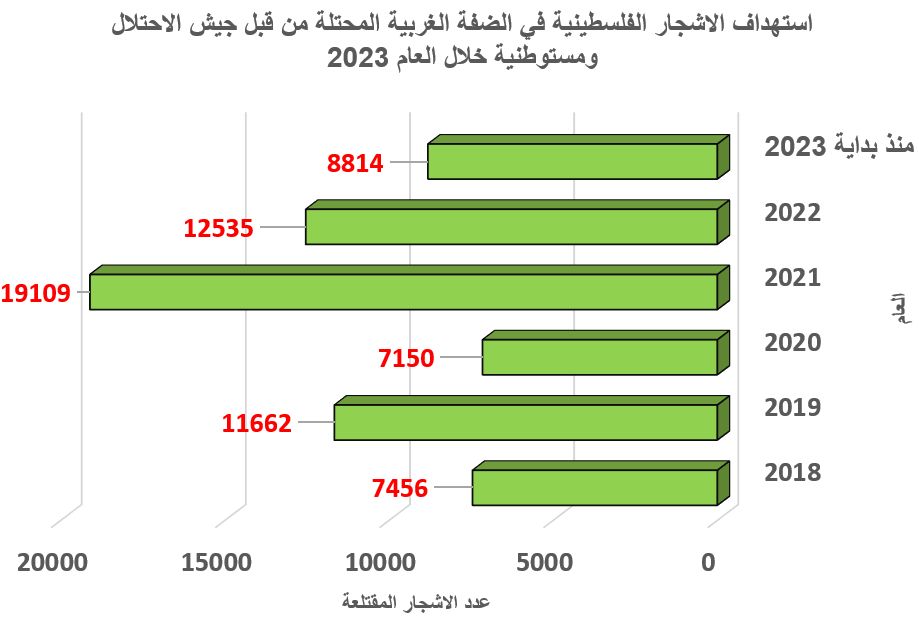- Violation: poisoning olive trees
- Location: Wad Qana area- Salfit governorate
- Date: August 04, 2016
- Perpetrators: so-called Israel Nature Authority
- Victims: farmer Sa'id Zaidan
Details:
The Israeli occupation aims at taking over as much area as possible from Wad Qana and fight farmers in all possible means to strike the economy and the very existence of Palestinian in there.
The so-called Israel Nature Authority sprayed on August 04, 2016 toxic chemicals on parts of agricultural lands in the area of Wad Qana on the claim of fighting toxic plants in the area.
In reality, the sprayed substances killed 30 aging olive trees and caused great damage to other 30 almond trees founded in the area. According to some eyewitnesses, the workers of Nature Authority sprayed the substances widely to affect the whole area.
The affected trees belong to farmer Sa'id Zaidan (45) who told Land Research Center the following:
" The affected trees have been planted since 25 years ago. I dedicated all my time to take care of those trees and fought hard against colonists' attacks on the land. The trees were a complementary source of income; they produced 900kg of olive oil annually"
Colonist of the nearby and army troops never stopped attacking the area of Wad Qana and damaging lands and trees. Farmers are, most of the times, denied access to their lands in a step Israel undertakes to take over lands to be used for colonial expansionist plans.
About Wad Qana:
It is located in the northwest part of Deir Istiya and surrounded by: Jinsafut, Kfar Laqif and Azzun from the east, Sinrya and Kfar Thulth form the west, Qarawat Bani Hassan from the south, and Amatin and Deir Istya from the east. Most of Wadi Qana lands are owned by farmers from Deir Istiya. The valley overlooks "Yaker" colony from the southern side and near to is "Nofem" colony. From the north side, there are three colonies surrounding the valley and they are: "Karni Shamron", "Jannat Shamron", and "Maa'ni Shamron".
Wadi Qana is relative to the village of Deir Istiya ( 34,129 dunums) and has a total land area of 10,000 dunums, of which 13 dunums are the built-up area and 11 water springs. Worth mentioning, the place is planted with citrus, olives, and field crops.
The area is a natural slope that is located between two mountains and is famous for water abundance and soil fertility.
The lands of Deir Istiya are classified, according to Oslo accords as follows:
- Area B: it totals around 6132 dunums (18% of the village's total area)
- Area C : it totals around 27997 dunums (82% of the village's total area)
- Noteworthy, Wad Qana lands are all classified as area C.
Prepared by
The Land Research Center
LRC





















